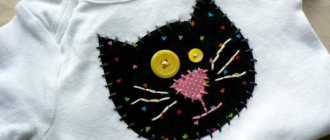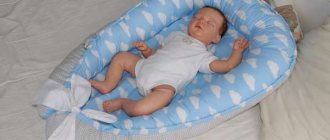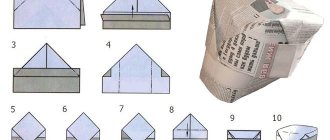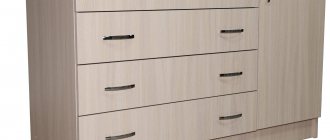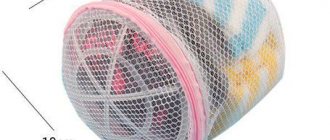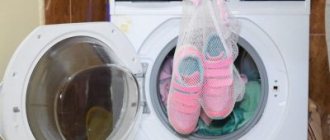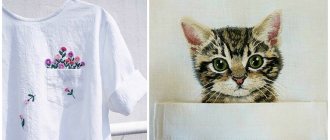Do-it-yourself fabric appliqué will help you decorate your clothes, decorate your home, or disguise a hole in the fabric. The technique allows you to quickly and efficiently produce trinkets; the decor retains its appearance longer than paper decor.
Even children who can hold scissors in their hands can be involved in needlework. There are several varieties of ways to create appliqué from fabric.
Choosing fabric for the base
The base fabric plays an important role in making the appliqué. Not everyone is suitable for this purpose. For example, you should not give preference to delicate viscose knitwear, as it will stretch and lose its shape. Linen with good rigidity or matting does an excellent job of this task; even jacquard can be made on it.
Therefore, it is worth choosing fabrics that are stiffer than the applique itself. The material does not necessarily have to be thick and dense. Even organza can handle it, provided it has rigidity.
Suitable materials for the job
When creating an applique, any fabrics and elements can be used in the form of:
- thick wool, tweed, wool blend. Smooth appliqués on items such as sweaters, jackets, skirts, vests, and coats can be made well from these materials.
- soft knitted. They will help in creating unexpected draperies and add volume.
- smooth thin ones such as cotton, linen, silk. They will serve as excellent materials to create an accent color or a background for smaller details.
- transparent such as tulle, organza, gas silk, lace, guipure in order to create voluminous details represented by frills, flounces, bows.
New Year's boot
New Year's boots are a very necessary thing for the New Year and Christmas holidays. How nice it is to look into it early in the morning and find a pleasant surprise. It is quite simple to make such a miracle. Follow our master class step by step and you will succeed.
For the New Year's application you need:
- red fabric;
- white felt;
- multi-colored cotton fabric;
- orange felt;
- canvas for embroidery;
- floss threads;
- sewing threads to match the color of the fabric;
- sequins - stars;
- decorative eyes;
- glue "Moment";
- sewing machine, overlock.
Algorithm for working with an application
Before you start making crafts using this technique, you should know how to make an applique from fabric and the basic steps.
Working with the application includes the following steps:
- Template selection;
- Determining the preferred size, shape;
- Selection of materials;
- Cutting out elements;
- Selecting a background if it is not selected in advance;
- Overlaying details on the background;
- Fixation of elements;
- Dry if necessary.
Cute sheep
For work you will need the following tools and materials:
- Non-woven fabric;
- Sintepon;
- White and beige fleece pieces;
- Sewing threads in white and beige;
- Beads;
- White satin ribbon;
- Scissors;
- Sewing pins;
- Sewing machine.
How to properly complete the application? Let's look at the step-by-step instructions.
Based on the template presented below, we draw our sheep on non-woven fabric. We cut it out.
After that, we place the cut piece on the padding polyester and cut it out, it is advisable to do this, leaving a little extra space on the padding polyester.
On the wrong side of the white fleece we lay padding polyester and interlining, as shown in the photo.
Using sewing pins we fasten all the components together. And we stitch it on a typewriter.
We cut out the sheep, almost at the very line.
Now we are working with beige fleece. We pin and sew on the head and legs using a typewriter. The excess must be cut off.
Next we make the eyes from satin ribbon. As you can see, the steps are the same everywhere: attach, sew and cut.
Now we make a curl on the fur using machine stitching. Along the edge of the finished pattern, cut off the excess fabric.
Using a beige thread, machine stitch the mouth and folds on the legs. We make eyes from beads, and embroider the nose with black thread.
This concludes the master class.
Connecting elements: sew or glue?
You can connect the application:
- Hand stitches in the form of loop, chain, satin stitches;
- using a machine (select stitch type (zigzag), pitch, height);
- Stygis fabric with a hot-melt adhesive layer. The use of threads, needles, and glue is not necessary. Children can do appliqué with the help of Stigis;
- gluing on film. You need to stock up on cling film and two pieces of foil. On an ironing board, assemble a multilayer sandwich of foil (the size is larger than the motif that is glued), the base face up, cling film (cut along the contour of the motif so that there is a margin of 5 cm). Iron at minimum temperature, leaving to cool. The method is ideal for working with cotton fabrics. The finished item can be hand washed, excluding twisting.
Adviсe
Before starting work, you should select the right tools and materials. Their quality directly affects the complexity of the work and the attractiveness of the product. An important factor is strict adherence to the algorithm of action when working with the application. Here are some tips to make the creation process easier:
- Pins are an important tool. With their help, individual elements are attached to the base. This allows you to change the location at any time without harming the material. This is important if there are a lot of small elements.
- To sew on the applique, use a thin needle. This gives the craft neatness and attractiveness.
- It is better to fix the details of the image using cotton threads.
- Sewing pieces near the border is not recommended, this will lead to tightening and lack of space on the base.
- Complex shapes such as a star or others with an acute angle require preliminary marking along the contour with a final seam.
- Fabric applique is impossible without preliminary sketches. Templates should come in two versions. You can take any pictures and enlarge them on your computer. Print. Then transfer to cardboard so that it is convenient to trace on fabric.
Hedgehog made from seeds
Such an application will certainly interest the child, because he will need to work with very unusual materials.
For such a hedgehog you need to prepare:
- sunflower, pumpkin, watermelon seeds;
- walnut shell;
- dry leaves;
- plasticine;
- cardboard, colored paper for the base;
- PVA glue;
- scissors.
Description
First, we’ll draw it ourselves or print out a finished hedgehog pattern.
Now we will create a prickly coat of seeds. We attach a plasticine ball to the thick end of each of them. Carefully, starting from the outline, attach the “needles”.
Fill the entire surface of the fur coat.
We make an ear from a pumpkin seed.
We make paws from watermelon seeds.
We attach mushrooms to the back of the hedgehog. We will make them from walnut shells and yellow plasticine.
Let's make an apple out of red plasticine and attach it there.
In order for the applique with a hedgehog to have a completed look, we make a frame along the contour of the seeds. Glue dry leaves along the bottom edge.
Varieties
The fabric applique represents:
- Subject. The application is represented by separate elements assembled into one whole. Can be in the form of a leaf, branch, bird, etc.
- Plot. This application is compiled in such a way that the totality of actions and the sequence of events can be clearly traced.
- Decorative. Various patterns and ornaments are placed on the fabric. In this way you can decorate pillows, blankets, bedspreads, and other interior items.
By technique:
- Multilayer. The application is made of several layers superimposed on each other.
- Volumetric. A piece of padding polyester or cotton wool is placed under it, making the applique appear convex. This type of work requires careful washing, otherwise the applique will lose its appearance.
- Negotiable. The decorative blank is fixed from the inside out, not from the outside.
Double layer crafts
To learn how to make this type of product with your own hands, you need to start getting acquainted with easier options; the process of creating a composition is a little more complicated.
Two identical patterns are sewn together, and after the work is completed, the toy for children or interior decoration is turned inside out. To give the product a shape, it is filled with filler; the following are perfect for implementing such solutions:
- Cotton wool.
- Sintepon.
- Small foam.
As soon as the appearance suits the master who took up the process, the decorative part can be attached to the base or clothing. Using this technique, you can create a wide variety of paintings or scenes.
